- Administrator
- Albums and Singles
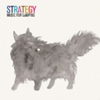 Paul Dickow's beat-less excursions share much with his more rhythmic compositions, but unfettered by time signatures his music sounds all the more exotic and mercurial.
Paul Dickow's beat-less excursions share much with his more rhythmic compositions, but unfettered by time signatures his music sounds all the more exotic and mercurial.
Audio Dregs
Future Rock was certainly a telling title, but for all the rocking the album exhibited it also displayed a clear preoccupation with ambiance and minutiae. Between the rubbery bass lines and snapping snares were waves of carefully processed electrical currents and sizzling synthetic effects. As it turns out, if you take the rhythm section out of Dickow's musical palette, there's a whole world of living melodies and microscopic field recordings to be appreciated. Music for Lamping takes a light to Strategy's less danceable side and emphasizes all the clattering noise and radiation that usually serves as mere accompaniment.
The 14-minute opener, "I Can't Stand the Rain," seems to reveal its title as a lie. Dickow slowly builds an electrical downpour out of potent blips and melodic bubbles until it finally fizzles out in a familiar wave of subdued sound. The effect is comforting and simple: Dickow pushes his artificial world of sound to its limit until it finally reaches the organic world and approximates the soft tapping of rain on a window or roof. "Cathedral Spark" then reaches further into the abstract and creates a space of echoey alienation. With the title in mind, any comparison to a cathedral's mammoth acoustics seems apropos. The sound is busier and less somber than what one might expect to find in a cathedral, however; bells ring and wooden percussion shuffles like a deck of cards throughout the song with a repetitious and airy organ whiling away above everything. "Bike Click" summons otherworldly voices into the mix of sound and casts them to the solar winds, rendering any comprehension impossible. By the time "All Day..." fades out and its simple, unadorned sequence ends, it seems as though Dickow has slowly journeyed from firm, sensible ground to a completely groundless, gravity-less dream world.
Such droning wandering does not suit Strategy as well as the busier, more detailed songs do. "World Service" thankfully sees Dickow filling his music up with jumping cuts of reverb-soaked effects and pulsating shifts in pitch and texture. "Lower Macleay" continues this trend and rounds the album out with a final 14-minute hallucination. Dickow makes full use of that time, proceeding from a rainy field recording to a wet and vibrating mess of synthetic errors and scratchy samples. It's a beautiful amalgamation of melody, unnatural "rhythm," and perfectly arranged events. Dickow's liberation from the beat is an excellent happening and cause for some excitement. Hopefully this isn't a one-off performance and other, similar recordings aren't far off.
samples:
Read More
- Administrator
- Albums and Singles
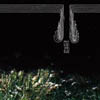 Oddly enough only intended for the Japanese market, any fan of either of the projects included here should either be praying for a local label to distribute this, or just go the import route, because both are at the top of their game here. Envy continues their shoegaze influenced post rock sound, while Jesu adopts the more electronic side to his sound that was, coincidentally enough, last featured this well on the split with another TRL act, Eluvium.
Oddly enough only intended for the Japanese market, any fan of either of the projects included here should either be praying for a local label to distribute this, or just go the import route, because both are at the top of their game here. Envy continues their shoegaze influenced post rock sound, while Jesu adopts the more electronic side to his sound that was, coincidentally enough, last featured this well on the split with another TRL act, Eluvium.
Envy contributes the three tracks that open up the disc, followed by Jesu’s two. “Conclusion of Existence” is all treated shoegaze guitars and lots of synths: the thick production and quiet vocals actually put it not far removed from the second side of The Cure’s Disintegration with a modernized digital sheen. “A Winter Quest for Fantasy” retains a similar feel, but is focused less on the electronic and more on the guitar, the electronic percussion this time replaced with living drumming. “Life Caught in the Rain” cranks the rock up noticeably more, especially in its midsection where they return to their hardcore roots, even if its just for a brief time.
Jesu, in this case Justin Broadrick solo, take up slightly more room on this disc with only two tracks, the sprawling “Hard to Reach” and “The Stars That Hang Above You.” As aforementioned this is Jesu sticking closely to an electronic sound, there’s no heavy layered riffing like is usually featured on the full length albums, instead it is made up mostly of synths and heavily treated guitar, though some good old fashion metal elements show up here and there. “Hard to Reach” begins with a long passage of skittering digital percussion, tons of layers and effects over it before the vocals kick in, where Justin continues Jesu way of actually singing rather than the growl he developed within Godflesh. While it stretches for over 13 minutes, it stays consistently gorgeous. Oddly enough it’s not like the other long form tracks Jesu has put out, such as on Heartache and Sundown/Sunrise, because this retains the feeling of a singular track, rather than the others feeling like multiple elements combined into a single piece.
The shorter “The Stars That Hang Above You” opens like “End of the Road” from the Lifeline EP ends with its layered synth and heavily treated guitar, but tacks on a a noisy breakbeat that could have been lifted from the early days of Techno Animal. Even with the rough beat, the track is probably one of the gentlest, most pop oriented tracks Justin has ever released, while still retaining everything that has made Jesu great thus far. Even the second half of the track, when the heavy guitar and drum machine kicks in, it stays slow and beautiful.
Both bands have, in my humble opinion, contributed some of their best work to this split disc, and their sounds make for a natural compliment to each other. It is interesting to see that Jesu is actually the less “rock” project this time around which, back in Godflesh’s heyday, I would have found to be an absurd thought. As probably the biggest Jesu fan on Brainwashed, I was absolutely gushing at how great the two tracks on here are, and I’m still doing as much.
samples:
- Envy - A Winter Quest for Fantasy
- Jesu - Hard to Reach
- Jesu - The Stars that Hang Above You
Read More
- Administrator
- Albums and Singles
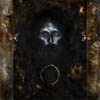
It’s good to hear that some folks who are doing the whole "drone metal" thing are remembering where the roots of the sound are, as opposed to simply trying to ape the "big names" of the scene. This relatively new Greek band definitely wears their influence on their sleeves, creating this homage to the Church of Black Sabbath and the holy scripture of Earth’s 2.
The short (by comparison) opening track "Aurora" is the most uncharacteristic of the three included here. What sounds like violin or viola scrapes are met with odd vocal sounds and backward guitar elements.As a whole it has a very disorienting feeling to it, like the sounds of being lost in a deep dark jungle somewhere with no sign of civilization in sight.
This brief prelude is much different than "Tabula Smaragdina", which opens with the remaining duration of the disc’s raison d’etre:slow, distorted guitar riffs that are allowed to sustain for a reasonable amount of time, creeping, pounding drums and growled metal vocals.It does have a similar vibe to the big boys like Sunn O))), but there is a greater sense of propulsion here:rather than drifting like an iceberg, it instead creeps along somewhat faster like a steamroller with a bad attitude.Throughout the first half, the guitars get louder and more "metal" but never really quickens the pace, nor should it.The second half opts for a more experimental approach with less conventional, treated sounds and chanted, rather than snarled vocals.It is a nice break, but when the slow motion Earth chug returns at the end, it just feels right.
This general vibe continues into "Asmodeus," which opens with heavy pounding drums and distant, whispered vocals that are somewhat of a contrast from the previous track.The vocals become more and more prominent, but for the first half stay rather restrained.Later on there is a greater emphasis on dissonant processed sounds, and the vocals become more screamed rather than sung which, unfortunately, somewhat cross into metal cliché realms.The drums at this point alternate between rapid fire blasts and pure sparse space, but the overall track stays slow.The ending of the track calls to mind "Aurora" in that it is focused more on reversed melodies as opposed to monolith riffs, but is even more subtle and quiet than anything that preceded it.
As a debut that was mostly recorded live, Heavensore manages to borrow elements of drone, black metal, and good old sludge/stoner rock in a way that enthralls, rather than bores.Another thumbs up for Utech’s URSK series, which may actually eclipse last year’s awesome ARC series.
samples:
 
Read More
- Administrator
- Albums and Singles
Daniel Padden has been a member
of the cult avant-rock band ‘Volcano The Bear’
since 1995, with several highly regarded
album releases on Nurse With Wound's United
Diaries label, Textile and Beta-Lactam Ring
Records. After moving to Glasgow he started
‘The One Ensemble Of Daniel Padden’ as an outlet for
his solo recordings with releases on Catsup
Plate, Secret Eye and Textile. When ‘The One
Ensemble’ slowly metamorphosed into a band of its
own, Padden started to record his solo output
under his birth name, with last year's "The Isaac
Storm" LP on the Ultra Exzema label being the first
seminal result.
Over the years Padden has developed a strong
fascination for obscure musics from all over the
world (re his recent "Epiphanies" article for The
Wire magazine): mouth organ love-songs from
Thailand, The Ramayana Monkey Chant from Bali,
khene pieces from Laos; so-called ‘world’ music from
Burundi to Bulgaria.
Combining these interests with his love for
British Folk and Art Rock (This Heat, Robert
Wyatt), Kraut Rock (Can, Faust), Free Jazz, the surreal
collage techniques of Nurse With Wound
and the odd humour of The Residents, he has
developed a totally unique and highly personal
musical vision without ever sounding
overambitious or directionless.
Gorgeous song-writing is seamlessly transformed into
pure fuzz or string drones, suddenly interrupted by
some improvised reeds or collapsing percussion,
all within the blink of an eye, and never losing its
natural flow.
"Pause for the Jet" is already an
auspicious aspirant for our "Record of the Year".
Read More
- Administrator
- Albums and Singles
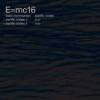 On this album, Steven Wilson uses sounds made from Steve Hubback's metal sculptures to make underwater music. Presented in a lavish package that includes a DVD-Audio disc along with a standard CD, a perfect-bound book with photographs, and a sturdy slipcase, it's without a doubt a beautiful artifact. It is a shame, then, that these two tracks don't quite live up to their presentation.
On this album, Steven Wilson uses sounds made from Steve Hubback's metal sculptures to make underwater music. Presented in a lavish package that includes a DVD-Audio disc along with a standard CD, a perfect-bound book with photographs, and a sturdy slipcase, it's without a doubt a beautiful artifact. It is a shame, then, that these two tracks don't quite live up to their presentation.
The aquatic theme likely would have been obvious even without the title or the book of oceanic photographs that's included. Both of the 20-minute tracks ebb and flow with chasms of reverberating metal that give an incredible sense of space, constantly evoking the feeling of submersion. They stretch time with their languid pace and use silence to suspend it altogether.
Even so, these tracks are far more static than such a theme would indicate. Too frequently, they stagnate rather than evolve. Rather than gaining in strength as they progress and building toward some awestruck peak, they recycle the same sounds and present them in more or the less the same fashion every time they appear. There are a few stretches where it seems like things are about to change and go somewhere different, but these moments disappear before they can be truly effective. The physicality of these tracks is indeed impressive, but too often it's at the expense of substance.
The DVD-Audio disc with its 5.1 mix is obviously the best way to hear this album because of its ability to hold more information than a conventional CD, but more could have been done to enrich the overall experience. While including a gallery of eight photographs as a feature on the DVD, it seems a bit of a wasted opportunity to include only still-life photography when seeing them come alive as moving imagery would have been a thrilling option. As it stands, the DVD's photos reveal little more than what's already detailed in the accompanying booklet.
Pacific Codex overwhelms subwoofers and rattles windows as expected, but it never quite takes listeners anywhere new. While it has plenty of low-end depth, the lack of development prevents it from being the sonic immersion it could have been. As such, it's a good album but not a great one.
samples:
Read More
- Administrator
- Albums and Singles
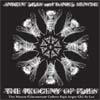 Prolific artists Andrew Liles and Daniel Menche combine forces to tackle the subject of flies. Divided into four tracks named for the stages of a fly's life cycle, Liles and Menche blend their talents in a heady mix of drones and subtle textures, with vaguely melodic underpinnings. The album has enough unpredictability to make it both mystifying and alluring while still playing to the artists' respective strengths.
Prolific artists Andrew Liles and Daniel Menche combine forces to tackle the subject of flies. Divided into four tracks named for the stages of a fly's life cycle, Liles and Menche blend their talents in a heady mix of drones and subtle textures, with vaguely melodic underpinnings. The album has enough unpredictability to make it both mystifying and alluring while still playing to the artists' respective strengths.
"Eggs" opens with heavy drones that are soon balanced by eerie, slight melodies smeared across the distant background. It's a haunting or at the very least mysterious effect, and the sly introduction of other textures, like faint distortion or mechanical cycles, increases the tension as the track progresses. Heavier bass-wise but overall quieter "1st to 3rd Instar" is also dotted with patches of Liles' piano that aren't a whole lot different from the various "Anhedonia" riffs from his Vortex Vault series. Juxtaposed against whisper-level drones and occasional machine thumps, they sound lonely and bleak. This track is the album's most introspective and comes like the calm before a storm.
The action picks up on "Pupa" with a horse's anguished neigh. It's brief but startling enough to reawaken ears that may have grown dormant over the course of the last track. Bouncing bass tones and a tinny plucked melody lead into metallic overtones, submerged pounding, and faintly buzzing strings that hint of menace. Things come to a head with the finale "Metamorphosis." Not only do the buzzing strings return more agitated than ever, high-pitched screeches like a cacophony of punctured brass instruments grow in a fierce chorus. There's a brief respite before, at last, the flies themselves make an appearance before fading into the void from which they had come.
Liles and Menche make the most of this collaboration, imbuing it with their unique sensibilities to give the album the effective impression of a narrative arc. While this album skirts around territory visited in some of their other work, here the combination of their skills entrances the ear in an entirely different way altogether.
samples:
Read More
- Administrator
- Albums and Singles
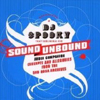 DJ Spooky's brand of audio-collage transcends his labors as archaeologist and cuckoo. With dozens of sound sources including Marcel Duchamp, James Joyce, Raymond Scott, Sun Ra, and Morton Subotnick, this companion to his Sound Unbound book balances theory with swinging music.
DJ Spooky's brand of audio-collage transcends his labors as archaeologist and cuckoo. With dozens of sound sources including Marcel Duchamp, James Joyce, Raymond Scott, Sun Ra, and Morton Subotnick, this companion to his Sound Unbound book balances theory with swinging music.
The sheer quantity and obscurity of the voices to be heard on Sound Unbound is staggering. The words come thick and fast and from such heavyweights as Jean Cocteau, Joyce, Gertrude Stein, Duchamp, Rene Magritte, and Sussan Deyhim. Sounds to match and contrast come wild and soothing from such imaginations as Subotnick, The Master Musicians of Jajouka, Scott, Iannis Xenakis, Edgar Varese, and Terry Riley.
I haven’t read the book but this compendium leaves me thinking that, even though the (time out of) joint role of creator and interpreter can seem a bit suffocating, since we are insufferably lazy we probably need DJ Spooky not only to do what he does but also to tell us what he is doing and what it all means. For certain some of these juxtapositions sound great, not least dropping the frothing Dada poetry of Raoul Hausmann into swirling strings and spacey rhythms (courtesy of Radio Mentale and Shukar) but a nagging insufficiency persists. Perhaps the book sheds light on whether there is a connection beyond mere sound, but even if it does, these clips would have to be palatable for most listeners to care. Thankfully, Spooky never sacrifices sound for meaning.
Also on the plus side, the array of archival contributions is truly gobsmacking. Amidst the cross pollination, Raymond Scott’s contributions stand out, Ginsberg is placed in the folk setting where he so obviously belongs, and Sound Unbound showcases an understanding of the power of repetition in poetry and blues: a truth we might hear in scratching vinyl, dub, rap, jazz and the branches that have grown out of those roots. However, there is something awfully predictable about the pairing of William Burroughs with Iggy Pop (although that may be the point) and there’s an element of preaching to the choir in the choice of material. Maybe DJ Spooky feels his work is apolitical or that the left-leaning wing of the arts has a monopoly on the radical. That may be the case, but something deep within me wishes he would take his skills and torture Rush Limbaugh and Pat Robertson with their own reactionary words. Meanwhile, I expect those who have read Sound Unbound will want to hear this disc as much as I now want to digest the book.
samples:
Read More
- Administrator
- Albums and Singles
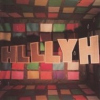 At one time, California pop-punk band The Mae Shi sold mixtape CD-Rs of their chopped-up favorite songs at gigs. They have certainly progressed from those days, and HLLLYH is their fourth album to date. Here, they shower us with their brand of rapid bounce-along pop-punk, full of catchy melodic hooks and string-breaking guitar riffs, in a concerted effort to bounce, grin, and charm their chaotic way into our hearts.
At one time, California pop-punk band The Mae Shi sold mixtape CD-Rs of their chopped-up favorite songs at gigs. They have certainly progressed from those days, and HLLLYH is their fourth album to date. Here, they shower us with their brand of rapid bounce-along pop-punk, full of catchy melodic hooks and string-breaking guitar riffs, in a concerted effort to bounce, grin, and charm their chaotic way into our hearts.
They completely won me over and I found myself grinning along with, and nodding my head to, this four-piece from Claremont, Los Angeles. Initially, vocalist Ezra Buchla’s (Gowns) manic high-pitched voice and delivery did nothing for me except grate. Over time though, I gradually came to realise that it fit seamlessly into the general tenor of the music exhibited here. There is a lot of mayhem too, spread over 14 tracks infused with great handfuls of joyful abandon. It’s even something of a concept album. With song-titles of the likes of “Lamb and Lion,” “Leech and Locust,” Book of Numbers,” and “Divine Harvest,” it’s not hard to discern what the theme that glues this album together is. Even so, even with its references to God, Jesus, and souls, I am not entirely sure whether this is a punk album with Christian overtones or vice versa. Either way, it doesn’t make much difference in actuality, the sheer exuberance being broadcast from here can indeed be picked up by anyone, whether secular or otherwise.
The band rely on the tried and trusted formula of guitar, keyboards, bass, and drums, racing through most of the songs at a break-neck pace, the majority of the songs lasting no more than the standard two to three minutes. There a few exceptions to the rule, including what is the one stand out track for me, the eleven-and-a-half minute “Kingdom Come.” Bizarrely this is actually totally unrepresentative of the album as a whole, being something of an exercise in dance-floor aesthetics. It still distils the melodic essence of The Mae Shi for all that, but adds a hugely funky vibe, ladling in plenty of danceable hooks that seem to have been culled from their repertoire. In amongst the general manic gleefulness this probably compresses the most irrepressible optimism and upbeat happiness into every square second of playing time than the rest of the album.
Listening to Buchla’s voice reminded me of no-one so much as a young Perry Farrell at times, circa the first Jane’s Addiction album, albeit with an amphetamine-fortified delivery appended to it. All the songs are replete with lashings of vocal harmonies complementing the melodies, and for all the world give the impression of being either a ramped up version of the Beach Boys or a choirful of stressed-out gospel singers. None better example of this can be found than in the infectious footstomper “Young Marks,” a keyboard and drum-fuelled beast that swept me up and carried me headlong to heaven-knows-where. The thing is I wouldn’t have cared if that had actually happened. If this is indeed a ‘Christian-punk’ album (although there’s no indication either way) then it appears that they have overdosed on the grace imparted to them and now they want everybody else to share it. I can almost imagine them foaming at the mouth and staring glassy-eyed in their ecstasy, judging from some of the songs at least. In fact, I seriously don’t know whether to trust or fear these people.
Regardless, this is a hopelessly upbeat and melodic album, crammed with all the necessary disarmingly tuneful hooks to draw one into their fold. Furthermore, the spirit (in a musical sense) of this album is so incurably infectious it was hard to resist its pull. For me at least, there was no better test of its quality than whether my head would nod or my foot would tap along to it. On this occasion there was plenty of both.
samples:
Read More
- Administrator
- Albums and Singles
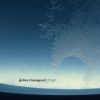 Jérôme Chassagnard is one half of French electronic/ambient act Ab Ovo, along with Régis Baillet. As a solo act, though, he has released two previous albums on Ant-Zen, 2005's Empreintes and last year's Mouvements. His latest, (f)light, highlights his eclectic mix of styles and influences, from ambient to electronica, and from hip-hop to drum n bass. This third album, this time on the German Hymen label, underscores Chassagnard's ability to blend all these disparate styles together into one seamless and effortlessly soaring whole.
Jérôme Chassagnard is one half of French electronic/ambient act Ab Ovo, along with Régis Baillet. As a solo act, though, he has released two previous albums on Ant-Zen, 2005's Empreintes and last year's Mouvements. His latest, (f)light, highlights his eclectic mix of styles and influences, from ambient to electronica, and from hip-hop to drum n bass. This third album, this time on the German Hymen label, underscores Chassagnard's ability to blend all these disparate styles together into one seamless and effortlessly soaring whole.
Bringing together such a wide range of influences successfully requires some doing, however, the Frenchman possesses a sure and deft touch. There’s nothing obtrusive on show, everything just flows, naturally, silkily and smoothly. Each of the pieces grows organically, as if just a simple seed has been nourished and left to see what it eventually produces. In fact, there is more than a trace of The Future Sound of London’s Lifeforms album about it (as well as FSOL’s side-project Amorphous Androgynous), simply in terms of how musical ideas are explored, and how they spark off yet new ones. From all these ideas come new forms, each eager to show themselves off. A good example of this approach is track three, “Circle of Memories.” Starting off in a quite abstract ambient manner, the piece segues into flowing keyboard chords, before a simple rhythmic figure coalesces to form a backbone and glue the elements together. The tune keeps on building, the percussion assuming more of a solid skeleton on which to hang things, adding strength and structure along the way. Despite being tinged with a slight melancholic sadness, “Circle of Memories” is nevertheless uplifting, projecting a distinct sense of hope.
Another good example comes a few tracks later in the form of “Alternate Reality.” Yet again, this particular piece demonstrates the power of constructing an apparently complexly-layered track from simple beginnings. Once more rhythm emerges from abstraction, on which is laid a simple but memorable keyboard riff. The track takes off when the beat hits its stride, imparting a similar feeling to the one elicited by “Circle of Memories”—the difference here though is that this one lifts off into the stratosphere. I distinctly got the feeling that I was wafting on breezes and floating in a clear azure sky listening to this one. Uplifting indeed.
“Snowflake” creates a different mood altogether, the abstractly ambient staying for most of its duration. Furthermore, this is the polar opposite of uplifting, with an unsettling frisson thrilling through it. Ice-cold keyboard sweeps dance around staccato icicle guitar, while distant choir-like voices peek through the glaciation. These voices float in and out of the consciousness, appearing like the occasional glimpse of something welcoming through the sheeting blizzard. Similar feelings of psychic disturbance prevail in “Resonance,” but here the song is injected with a rhythmic urgency helping to propel it along. Percussive and vocal breaks here and there highlight the feeling of psychological fracture-lines opening up, adding significantly to the discomfort.
My personal fave track is the one that closes the album, simply called “Light.” Indeed this is a prismatic gem of a piece, the synthesized bell-tones raining cascade-like around one’s head and ears. The best way I can describe it is like a frozen garden emerging butterfly-like from its chrysalis of ice. The tiny crackles and cracks as the ice melts are perfectly encapsulated in those ringing tones. After the various moods on display on the rest of the album, this closes proceedings down nicely, and is an excellently judged piece, simultaneously being a beautiful way to end the album as well as leaving us on an uplifting note.
This album is quite astonishing in its breadth, in both style and mood. Chassagnard is something of a sonic alchemist, taking an element from here and an element from there, and completely transforming them in the process. The results are ten nuggets of glittering gold, whose multi-faceted surfaces and depths sparkle and reflect brilliantly in the light. I just let myself sit back and bathe in the warmth of that reflected light.
samples
Read More
- Creaig Dunton
- Albums and Singles
Usually I’d imagine something coming out on the Hanson label to be a bit more obtuse and rough than what is presented on this album. Instead of leaning to the noiser end of the spectrum, the two side-long tracks here instead define themselves via classic analog synth drone that is so thick and sustained that it almost becomes tangible, yet never mundane.
The dramatic synths that open “Magic” do retain a certain prog rock quality to them, but rather than being all noodling, they instead stretch out far into the horizon. Long, sustained square wave notes matched with an occasional deep pulse. Sort of like Rick Wakeman collapsing onto his rig after a massive coke binge, the notes go on and on without pause. The layers continue washing on like waves and occasionally rescinding to allow different element of the mix to come forth. The track eventually becomes dominated by a noisier, buzzing synth tone that infringe on the territory of the noise scene, but never in a way meant to inflict pain.
The other half of the album, “The Quaking Mess,” is not a world away from the first half, instead following a similar structure and palette of the first, leading off with a bed of synths. This time, there’s more of a 1980s science fiction bent to the sound: think old episodes of Nova or Mr. Wizard and it’s a similar vibe. The analog cricket chirps and high end stabs are eventually paired with guitar work that, though noticeably effected and treated, remains subtle and restrained even through the delays and processing. Again, as the track ends, the synths become more predominant and harsh in the mix. The sound is thick and heavy, but not pummeling or violent.
As a first full-length album (after a slew of CDR and cassette releases), Emeralds have created a solid, fully realized work that due to its innate complexity stands up to multiple spins. In a scene crowded with many other electronic drone projects, this one stands out as a well-conceived album as opposed to just a random mix of sounds piled on top of one another.
Read More
- Administrator
- Albums and Singles
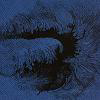 The content of this CD was a surprise. From the sleeve art, the record label and the picture of the band on the back, I was expecting harsh noise. Instead my ears were greeted with the most wonderful electronic murmurs. The two pieces here set my mind adrift on an ocean of warm synthesiser undercurrents and waves of gentle guitar. The feelings this music elicits bring to mind the sheer beauty of Stars of the Lid but with a stronger, denser sound.
The content of this CD was a surprise. From the sleeve art, the record label and the picture of the band on the back, I was expecting harsh noise. Instead my ears were greeted with the most wonderful electronic murmurs. The two pieces here set my mind adrift on an ocean of warm synthesiser undercurrents and waves of gentle guitar. The feelings this music elicits bring to mind the sheer beauty of Stars of the Lid but with a stronger, denser sound.
“Magic” lives up to its title; the shifting pulses shimmering in stereo, the sounds moving at different speeds with dizzying effect. The piece is reminiscent of Coil’s Time Machines, the drones almost stalling time and provide a platform for vivid daydreaming one second (if a second still had meaning) before utterly capturing my attention the next. Although only 12 minutes long, “Magic” stretches out time to the point where the concept of minutes and seconds means nothing. The piece’s very existence makes the need for time unnecessary. However, having said that, 12 minutes is really not enough.
The second of the two pieces, “The Quaking Mess,” is a slightly busier piece. Like the previous piece, there are sustained tones and drones that flow through the piece but unlike the previous track, there are pulsing and twinkling sounds (the guitar is more prominent here than before) that make it more obvious to the listener. I can still get lost between the sounds but the feeling of reality dissolving around me is not as strong. Instead reality seems to expand, becoming larger than life.
Both of these pieces are immensely satisfying, Emeralds tap into the sounds masterfully and it is hard to believe that three men on synths and a guitar made this beautiful music. It sounds like it was plucked from the cosmos, filtered from the ether or decanted from heaven (take your pick of supernatural metaphor). It will be interesting to see where Emeralds go from here. Solar Bridge is more than just promising.
samples:
Read More